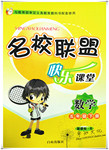题目内容
Surely it doesn’t matter where the Students’ Association get their money from; what _________is what they do with it.
A. counts
B. applies
C. stresses
D. functions
练习册系列答案
 名校联盟快乐课堂系列答案
名校联盟快乐课堂系列答案
相关题目
题目内容
Surely it doesn’t matter where the Students’ Association get their money from; what _________is what they do with it.
A. counts
B. applies
C. stresses
D. functions
 名校联盟快乐课堂系列答案
名校联盟快乐课堂系列答案